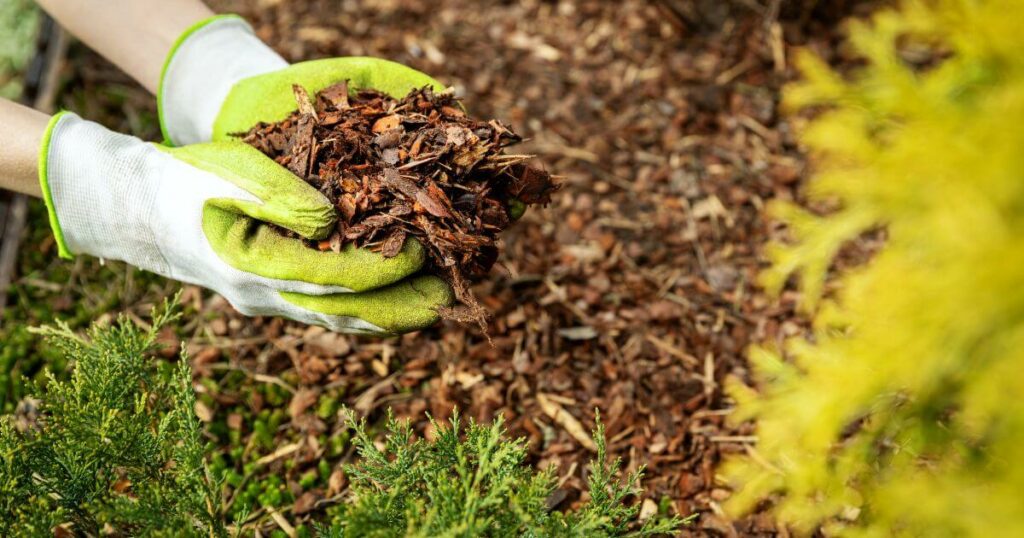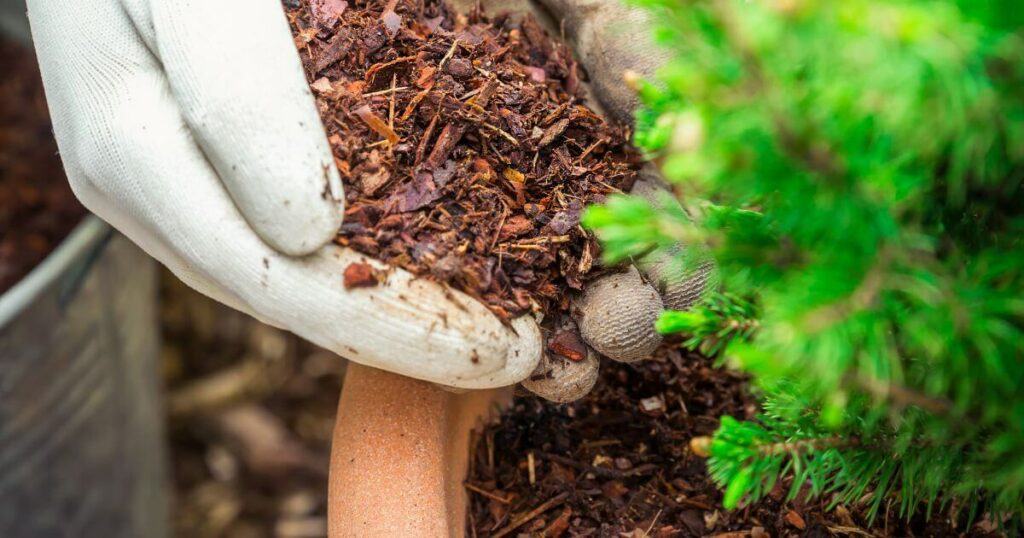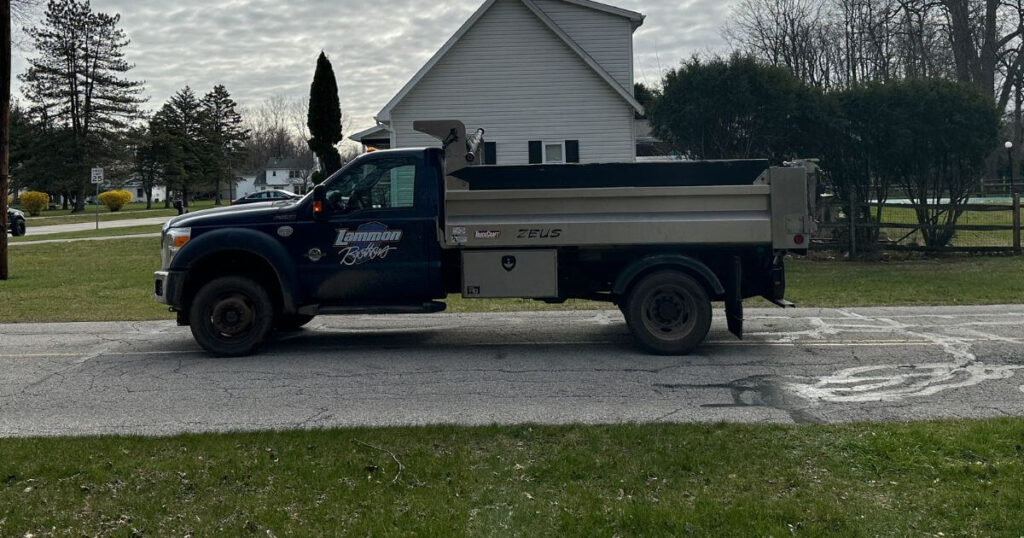
As a passionate gardener, you know that the key to a healthy and vibrant outdoor space lies in the details. One crucial aspect of garden maintenance that often goes overlooked is mulching. Springtime mulching, in particular, can make a world of difference in the overall health and appearance of your garden. In this comprehensive guide, we’ll explore the benefits of mulching, the best time to apply mulch in spring, and the techniques that will help you maximize its effectiveness. Lammon Brothers Products specializes in providing high-quality mulch to ensure your gardening success.
Benefits of Mulching
Moisture Retention
One of the primary benefits of mulching is its ability to retain soil moisture. By creating a protective layer over the soil surface, mulch reduces evaporation and helps the soil maintain a consistent level of moisture. This means you’ll need to water your plants less frequently, leading to water conservation and healthier plants.
Weed Suppression
Mulch acts as a natural weed barrier by blocking sunlight from reaching the soil surface. This prevents weed seeds from germinating and competing with your desired plants for nutrients and water. By suppressing weed growth, you’ll spend less time pulling weeds and more time enjoying your beautiful garden.
Temperature Regulation
Mulch also serves as an excellent insulator, protecting plant roots from extreme temperature fluctuations. During the hot summer months, mulch keeps the soil cooler, while in winter, it helps prevent frost damage by maintaining a more consistent soil temperature. This temperature regulation is particularly beneficial for perennials and newly planted shrubs.
When to Mulch in Spring
Timing Considerations
Knowing when to apply mulch in spring is crucial for achieving the best results. It’s essential to wait until the soil has warmed up sufficiently before mulching. Applying mulch too early can slow down the soil’s warming process, which may delay the emergence of spring bulbs and the growth of your plants.
As a general rule, it’s best to wait until your spring bulbs have finished blooming and your perennials have started to sprout before mulching. This typically occurs in mid to late spring, depending on your location and climate.
Ideal Conditions for Mulching
In addition to timing, it’s important to consider the weather conditions when mulching. The ideal time to apply mulch is after a light rainfall when the soil is moist but not waterlogged. This helps the mulch settle into place and adhere to the soil surface.
Avoid mulching right before a heavy rainstorm or during periods of strong winds, as this can cause the mulch to wash away or blow around, reducing its effectiveness.
Region-Specific Guidelines
Keep in mind that the optimal time for springtime mulching may vary depending on your specific region and microclimate. Consulting your local extension office or experienced gardeners in your area can provide valuable insights into the best mulching practices for your location.

How to Mulch Effectively
Choosing the Right Mulch
When it comes to selecting the perfect mulch for your garden, you have a variety of options to choose from. Mulches can be divided into two main categories: organic and inorganic.
Organic mulches, such as:
- Bark chips
- Shredded leaves
- Straw
- Compost
These mulches decompose over time, adding nutrients to the soil and improving its structure.
Inorganic mulches, like:
- Gravel
- Pebbles
- Landscape fabric
These provide a more permanent solution and can be ideal for certain landscaping styles.
Consider the specific needs of your plants and the overall aesthetic of your garden when choosing a mulch type. For example, pine needles work well for acid-loving plants, while cocoa hulls can add a rich, decorative touch to flower beds.
Preparing the Garden Bed
Before applying mulch, it’s essential to prepare your garden bed properly. Start by removing any weeds, debris, or dead plant material from the area. This will help prevent weed growth and ensure that the mulch lies evenly on the soil surface.
Next, check the grading and drainage of your garden bed. Ensure that the soil slopes gently away from your home’s foundation and that there are no low-lying areas where water can pool. If necessary, add soil or create drainage channels to promote proper water flow.
Applying Mulch
When it comes to applying mulch, the general guideline is to aim for a depth of 2-4 inches, depending on the area and plant type. Here are some specific recommendations:
| Garden Area | Recommended Mulch Depth |
| Flower Beds | 2-3 inches |
| Around Trees | 3-4 inches |
| Vegetable Gardens | 1-2 inches |
When mulching around trees and shrubs, create a doughnut-shaped ring of mulch, keeping the mulch a few inches away from the trunk or stem to prevent moisture buildup and potential rot.
For even distribution, use a rake or your hands to spread the mulch evenly across the soil surface. Be careful not to over-mulch, as this can lead to drainage issues and create an environment that is conducive to pests and diseases.
Common Mulching Mistakes to Avoid
Over-Mulching
While mulching offers numerous benefits, it’s possible to have too much of a good thing. Over-mulching, or applying mulch too thickly, can lead to several problems:
- Reduced oxygen flow to plant roots
- Excess moisture retention, leading to root rot
- Nutrient deficiencies due to soil compaction
To avoid these issues, stick to the recommended mulch depths for your specific garden areas and plants.
Mulching Too Close to Plant Stems
When mulching around plants, it’s crucial to leave a bit of space between the mulch and the base of the stems. Mulch that touches the stems can trap moisture, creating an ideal environment for stem rot and other fungal diseases.
As a rule of thumb, keep a mulch-free zone of about 1-2 inches around the base of your plants. This will allow for proper air circulation and reduce the risk of disease.
Using Fresh Wood Chips
While wood chips can make an attractive and effective mulch, it’s important to use aged or composted chips rather than fresh ones. Fresh wood chips can temporarily deplete the soil of nitrogen as they decompose, which can lead to stunted plant growth.
If you have access to fresh wood chips, consider aging them in a pile for several months before using them as mulch. Alternatively, opt for commercially available wood chip mulches that have been properly aged and processed.
Mulching for Specific Plant Types
Mulching Trees and Shrubs
Mulching around trees and shrubs offers several key benefits:
- Regulates soil temperature
- Retains moisture
- Suppresses weed growth
- Protects roots from lawn mower and trimmer damage
When mulching trees and shrubs, create a ring of mulch that extends to the drip line (the outer edge of the plant’s branches). Keep the mulch a few inches away from the trunk, and aim for a depth of 3-4 inches.
Organic mulches like bark chips, shredded leaves, or pine needles work well for trees and shrubs, as they break down over time and improve soil quality.
Mulching Perennials and Annuals
Mulching your perennial and annual flower beds can help suppress weeds, retain moisture, and add visual appeal to your garden. When mulching these areas, keep in mind the delicate nature of some plant stems.
Use a lighter mulch, such as:
- Shredded leaves
- Pine needles
- Cocoa hulls
These mulches are less likely to damage delicate stems than heavier options like wood chips. Apply a layer of mulch 2-3 inches deep, taking care to keep the mulch away from the base of the plants.
Mulching Vegetable Gardens
In vegetable gardens, organic mulches are the way to go. Not only do they help retain moisture and suppress weeds, but they also break down over time, adding valuable nutrients to the soil.
Some excellent mulch options for vegetable gardens include:
- Straw
- Grass clippings
- Shredded leaves
- Compost
When mulching your vegetable beds, aim for a depth of 1-2 inches. This will provide the benefits of mulching without smothering your plants or impeding their growth. As your vegetables grow taller, you can add a bit more mulch to maintain weed suppression and moisture retention.

Trust Lammon Bros Products for Your Springtime Mulching
Springtime mulching is a simple yet powerful technique that can transform your garden into a thriving, low-maintenance oasis. By understanding the benefits of mulching, the best time to apply it, and the proper techniques for your specific plant types, you’ll be well on your way to creating a garden that is the envy of the neighborhood.
Remember to choose the right mulch for your needs, prepare your garden beds properly, and apply the mulch evenly and at the appropriate depth. By avoiding common mulching mistakes and tailoring your approach to your specific plant types, you’ll maximize the benefits of mulching and enjoy a beautiful, healthy garden all season long.
So, what are you waiting for? Head over to Lammon Bros Products and explore their high-quality mulch options to get started on your springtime mulching journey today!
Frequently Asked Questions
- How often should I mulch my garden? It’s generally recommended to mulch your garden once a year, typically in mid to late spring. However, you may need to top off your mulch layer throughout the growing season to maintain the desired depth and appearance.
- Can I mulch over existing weeds? While mulch can help suppress weed growth, it’s best to remove existing weeds before applying mulch. Mulching over weeds may not effectively control them and can even provide a more hospitable environment for weed growth.
- What is the best type of mulch for a vegetable garden? For vegetable gardens, organic mulches like straw, grass clippings, shredded leaves, or compost are ideal. These mulches break down over time, adding nutrients to the soil and improving its structure.
- How do I prevent mulch from washing away during heavy rain? To prevent mulch from washing away, ensure that your garden beds have proper grading and drainage. You can also use edging materials like stones or landscape borders to help hold the mulch in place. Avoid applying mulch right before heavy rainstorms.
- Is it necessary to remove old mulch before applying a new layer? In most cases, you don’t need to remove old mulch before applying a new layer. Simply rake the old mulch to break up any compacted areas and remove any debris before adding the new layer on top. However, if the old mulch is diseased or infested with pests, it’s best to remove it entirely and start fresh.
- Can mulching attract pests or insects to my garden? While some organic mulches may attract certain insects, the benefits of mulching generally outweigh this potential drawback. To minimize the risk of pests, choose high-quality, properly aged mulches and avoid applying them too thickly. Regularly monitor your garden for signs of pest activity and take appropriate action if necessary.

